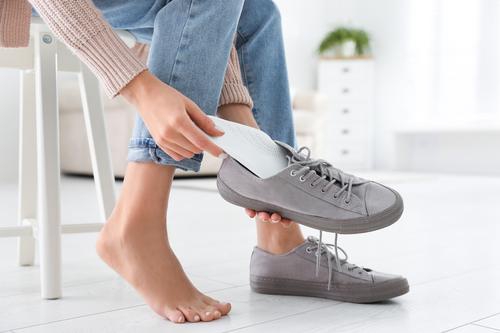Did you that, shortly before his death, former senator Joe Lieberman suffered a fall in his home? And did you know that his death was due to complications from that fall? At 82, he was active and vibrant, working in his law firm and still influencing policy in Washington. It took one fall to change all that.
Now, the risk of serious injury from accidental slips and falls increases with age. So it becomes crucial to safeguard our older adults. And, in today’s post, we’ll explain why it is so important to prevent falls in the elderly, and what we can do to help.
Why is it so important to prevent falls in the elderly?
Consider this alarming statistic. One out of every four seniors over the age of 65 experiences a fall each year. That’s a whopping 25% of seniors. And it's an astounding statistic that shows the importance of engaging in fall prevention efforts. As you age, your risk of falling increases due to factors such as declining physical health. Other risks come from complications from chronic diseases; or side effects of medications.
Now, when seniors do fall, the incident can result in anything from minor injuries to fatal complications. Even a minor tumble can lead to bruises, sprains or fractures that limit mobility and independence. Worse yet, a single fall can escalate into a life-threatening situation, especially if there’s a head injury involved. And even the fear of falling can impact an elderly individual’s mental health. It could lead to decreased mobility, self-imposed isolation, loneliness, depression and decreased strength. Is it any wonder, then, that falls are the leading cause of injury-related deaths in seniors over the age of 65?
And suffering from a fall is not an isolated risk. Once you’ve fallen, your risk for falling again doubles. So it’s clear that falls are a prevalent threat to seniors’ wellbeing. And, now that you understand the prevalence of this safety concern, we need to focus on reducing seniors’ risk of falling. Luckily, our podiatrist in Houston is able to help in these efforts. But first, let’s review individualized risk factors for falling. That way, you can understand which individuals are most likely to fall, regardless of age.
Risk Factors for Falling
Your balance and muscle strength play a crucial roles in preventing falls as you age. Yet, as you get older, it’s natural for these abilities to decline. Standing on one foot may be more challenging, or you may notice that you can’t lift heavy items the way you used to. And these factors directly increase your risk for falling.
Luckily, you don’t have to live with this increased risk. Regular exercise can help you maintain muscle strength. It can also improve your balance, reducing your chances of taking a tumble. Activities like Tai Chi or yoga, walking and swimming can all be beneficial. It’s also important to get regular checkups to spot any early signs of balance issues. But that’s not the only risk factors you need to worry about.
Additionally, conditions such as peripheral neuropathy or vision loss can increase your risk for falls. Remember, neuropathy is a nerve disorder that can cause numbness or weakness in your feet. In turn, that can affect your balance. And vision impairment can hamper your ability to navigate safely, even in familiar environments. But that’s not all. Other medical conditions that can increase the risk of falling in the elderly include heart disease and arthritis. (They can lead to dizziness and joint stiffness, respectively.) Yet by managing your conditions and reviewing the side effects of any medications, you can reduce your risk for falls. At the same time, you should still set up your home for success by eliminating any fall hazards.
To Prevent Falls in the Elderly, Set Your Home Up for Success ![an old man and woman sitting next to each other on a bench]()
By addressing the layout of your home and addressing potential safety hazards, you can greatly reduce the risk of falls. Clear up cluttered pathways, secure loose rugs and improve poor lighting to make the home a safer place for elderly residents. In the bathroom—a high risk area due to slick, wet surfaces—installing grab bars and non-slip mats can help.
But what about the kitchen? In this space, try to rearrange items to avoid using high shelves. Why is that so important? Reaching for items from elevated cabinets makes it more likely that seniors will use unstable step-stools. And that increases their risk of falling. But don’t forget the stairs. Consider installing stair treads for extra grip, and fit all staircases with sturdy handrails on both sides.
Preventing Falls in the Elderly: How Your Houston Podiatrist Can Help
First, make sure to screen elderly individuals for health conditions or medication interactions that increase the risk for falling. Then, create safe living spaces to protect their well-being. Afterward, you may wish to add more protective layers if the risk for falling is still elevated. And that’s where we often suggest introducing the ankle foot orthotics, medical devices that greatly reduce the risk of falling.
But how do they work? These devices are designed to support your feet and ankles, providing stability and improving your balance. They’re often custom made, ensuring a perfect fit for maximal comfort and efficacy. So, when you wear them, you’ll likely notice an immediate improvement in your gait, making it less likely that you’ll trip or lose your balance.
Now, these devices aren’t just for seniors with existing mobility issues. Even if you’re fairly agile, they’re a worthwhile preventative measure, especially if you’ve had a fall before. Still, while ankle-foot orthoses offer support, you should also incorporate exercise and physical therapy into your routine. That will to further reduce your fall risks, as long as your doctor has cleared you for these activities. And, for further help preventing falls from the feet up, click here to request a consultation with Dr. Andrew Schneider. When you come into the office, we can come up with a personalized care plan to prevent falls in the elderly loved ones in your life.
















